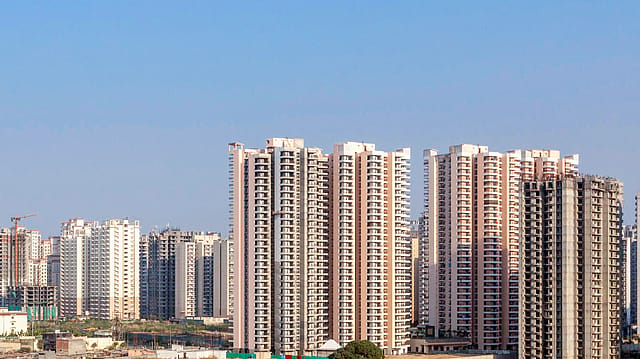Home sales grow 67%, beat pandemic blues
ADVERTISEMENT

Despite the morbid potency of the second wave of the Covid-19 pandemic, India’s residential real estate market reported a 67% growth in sales volume in the January to June period of this year, as compared to the same period a year ago. 99,416 residential units were sold across the country’s top eight residential markets of Mumbai, Pune, Bengaluru, NCR, Hyderabad, Chennai, Kolkata, and Ahmedabad in the first half of calendar 2020, property consultancy firm Knight Frank India said in a recent report.
Nearly 27% of the sales came in the April to June quarter, which coincided with the peak of the second wave of the Covid-19 infections. About 27,500 homes were sold in this period, registering a 185% growth year-on-year. “While residential sales started to show a resurgence, the momentum got impacted by the second wave of the pandemic starting towards the end of March 2021,” read the report, which is titled “India Real Estate—Residential, January-June 2021”. The period of the second wave coincided with that of the first wave last year, which had brought the residential sales market to a screeching halt.
January 2026
Netflix, which has been in India for a decade, has successfully struck a balance between high-class premium content and pricing that attracts a range of customers. Find out how the U.S. streaming giant evolved in India, plus an exclusive interview with CEO Ted Sarandos. Also read about the Best Investments for 2026, and how rising growth and easing inflation will come in handy for finance minister Nirmala Sitharaman as she prepares Budget 2026.
Fortunately, the second wave was less severe on the housing market. The impact of the second wave should be seen as more of a “speed bump”, as year-on-year growth in market volumes remains strong in half-yearly and quarterly terms, points out Shishir Baijal, chairman and managing director, Knight Frank India. A similar point is echoed by Rohit Poddar, managing director, Poddar Housing and Development Ltd. “With an aggressive vaccination drive coupled with limited restrictions on businesses, the second wave had less impact on the real estate sector,” he says.
With the foresight of the first wave, Poddar points out that developers recalibrate their approach towards new launches—developing properties that address the current new age home buyer demand. “Overall, H1 2021 has been fantastic in terms of sales and partial recovery,” he adds.
Interestingly, during the early part of this year, sales volumes were greatly influenced by the two markets—Mumbai and Pune—which Knight Frank India said constituted over 45% of the total sales among the eight markets. Reason: the Maharashtra government’s decision to lower stamp duty rates for a limited period.
“The limited period stamp duty cut which spiked home sales in Mumbai and Pune adequately demonstrates the need for policy level intervention to revive the residential market,” says Baijal. And going by the success of the stamp duty cut in Maharashtra, other states, adds Baijal, “may also consider similar demand stimuli at appropriate times that will not only help sales velocity but also propel economic activity.”
Knight Frank India’s report also concluded that the increase in sales activity has stemmed the fall in residential prices that was seen in 2020. “Price levels in four of the eight markets were observed to remain at the same level or grow marginally YoY in H1 2021. In comparison, just one market had been able to maintain price stability in H2 2020,” read the report.
Mumbai continued to top the charts with an average price realisation of ₹6,750 per square feet, followed by Bengaluru (₹4,920) and Hyderabad (₹4,720). “Barring the affordable segment which was impacted by the uncertainties arising from the economic disruptions of the pandemic, the strength of the market was adequately demonstrated,” says Baijal.
